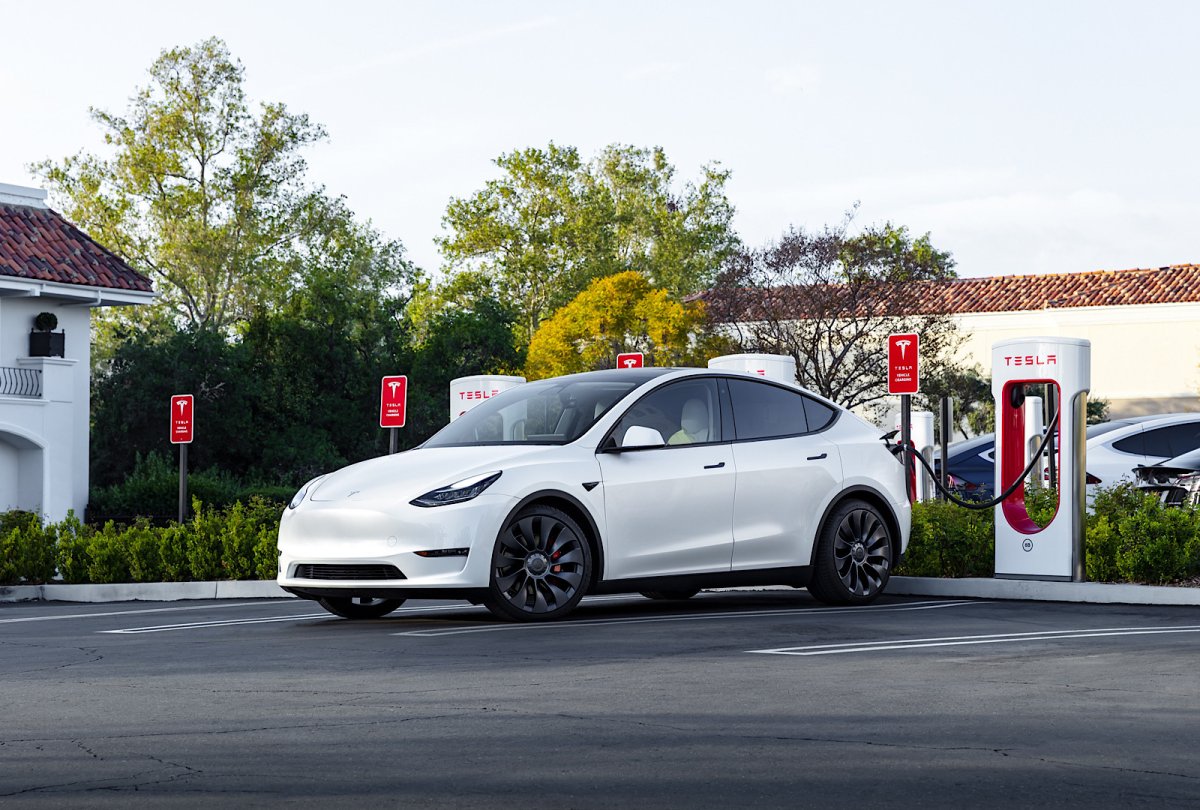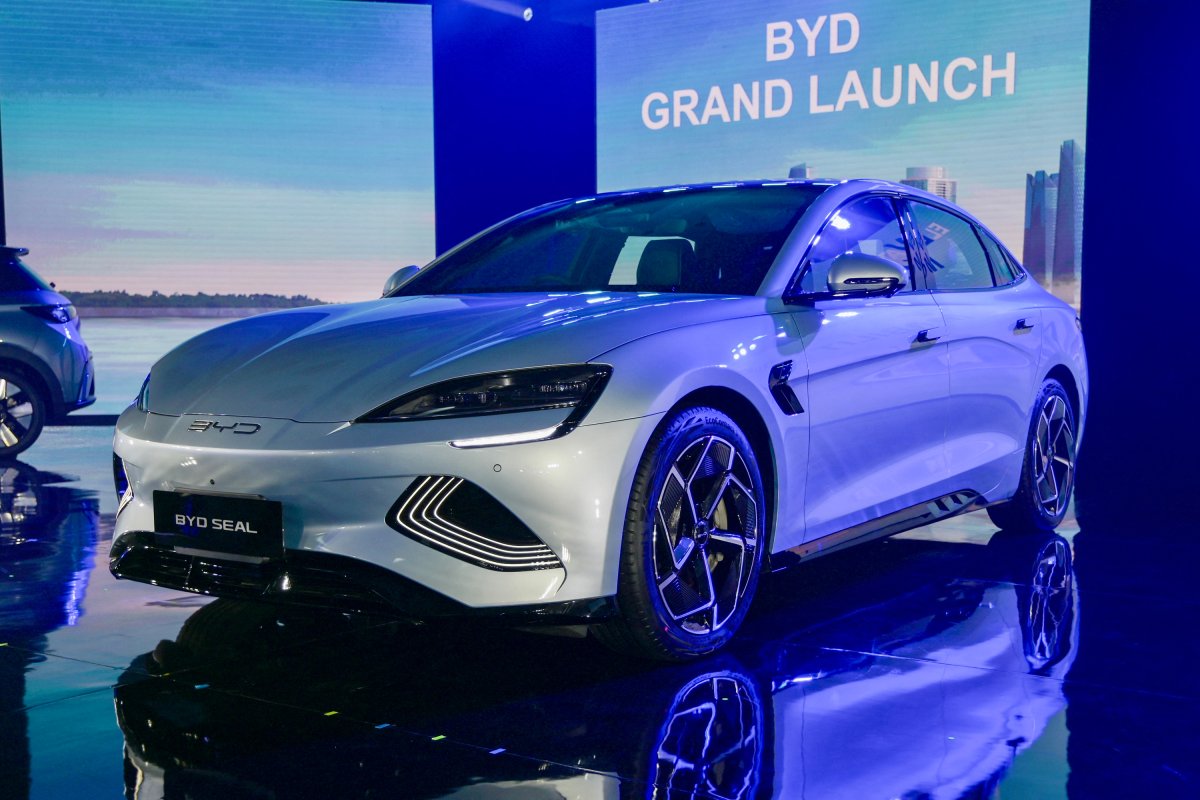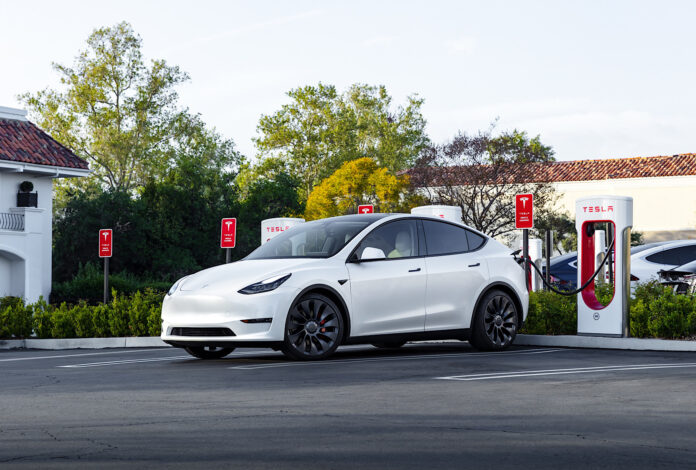Tesla Motors, for the past decade, has dominated electric vehicles sales in the U.S. and globally, not only by selling the most EVs, but also by selling the most popular ones. That changed at the end of last year, with Chinese rival BYD taking over that top sales spot, in both hybrids and EVs.
“Fifteen years ago, Tesla was converting a Lotus roadster into an electric vehicle and now look at them. Certainly, you’d be crazy to write off a company like that, but could they have done anything different [to keep ahead of BYD]? Probably not,” Dan Hearsch, Americas leader of the automotive and industrial practice of the global consulting firm AlixPartners told Newsweek.
BYD sold more new energy vehicles (EVs and hybrid) globally than Tesla in 2023, though none of its dozen or so vehicles could take down the Model Y alone, which is sold in the three biggest markets: China, Europe and North America. However, BYD is making inroads in Europe and has America in its sights, putting it further out of the reach of Tesla, and everyone else.
“BYD sold about 3 million vehicles last year, 1.6 million EVs and 1.4 million hybrids, and will be adding a few million over the next few years. In the fourth quarter BYD built and sold more EVs than Tesla,” Michael Dunne, CEO of global consulting firm Dunne Insights told Newsweek. “Tesla is embraced as a phenomenon, but they’re still expensive. BYD has many models under $30,000.”
Leon Neal/Getty Images
BYD’s prices are low, but its product innovation and product cadence is high. Their vehicles evolve quicker than most other brands’ models. Additionally, it is vertically integrated, controlling materials, production and sales, in addition to using in-house batteries and technology.
Experts agree that vertical integration is good in the short term for BYD, as it was for Tesla. “Is that a long-term advantage? I would say not. And your evidence point would be to look at all the Western OEMs, how they went from owning everything early in their growth cycles, Henry Ford’s first plant brought in rubber and coal. But in the you had the creation of companies like Visteon and Delphi and Denso because the original equipment manufacturers realized there is not a big advantage,” said Hearsch.
For now, BYD does have that vertical advantage, in addition to billions in Chinese government subsidies. Tesla only enjoys one of those. If BYD is allowed into the U.S. with only the current tariff, it could still spell doom for Tesla dominance there.
Deloitte US, a consulting and financial services firm, found in its 2024 Global Automotive Consumer Study that that 45 percent of U.S. vehicle owners plan to switch vehicle brands outside of their current manufacturer brand family. The second most cited reason for wanting to switch brands is price, which is also an opportunity for the introduction of lower-cost Chinese vehicles.
It also found that three quarters of U.S. EV intenders expect to pay less than $50,000 for their next vehicle. That covers only 15 of the 55 EVs on sale in 2024.

Tesla
“The application of Inflation Reduction Act-led incentives is helping to mitigate some of the price gap that still exists between EVs and internal combustion engine vehicles, but local manufacturing mandates likely mean additional investments to avoid significant import tariffs. Ultimately, this may work to close any initial cost advantages that Chinese vehicle manufacturers may have,” Ryan Robinson, Automotive Research leader, Deloitte US told Newsweek.
Robinson explained that vehicle manufacturing costs are a widespread, structural issue that most automakers are attempting to address with initiatives aimed at reducing complexity in the manufacturing process, which is a long process. Compounding matters, a significant number of U.S. consumers (39 percent) that are questioning whether they even need to own a vehicle going forward given their experience with shared mobility options.
Chinese companies staging for North American success
Experts say that the Chinese automakers are committed long-term to the U.S. market and would likely eat much of the tariff, even if it’s increased, to get a feel for consumer tastes, price sensitivity and build awareness and trust.
“The U.S. Trade Representative is considering raising the tariff above the current 27.5 percent and are studying how much to increase it by, and what if any consequences or effects of an increase would be. It could harm US companies doing business in China. However, an increased tariff wouldn’t do anything if they set up shop in Mexico, which is likely going to happen over the next several years. And that includes battery cell manufacturers like CATL, Gotion, CALB and BYD,” Tu Le, founder and managing director of Sino Auto Insights told Newsweek.
BYD recently opened up a factory in Thailand and plans to open one in Hungary within three years. It recently announced a $605 million investment in Brazil and just launched a feasibility study for a plant in Mexico, negotiating with national and local government officials over a location and other terms, according to Asia Nikkei.

BAY ISMOYO/AFP via Getty Images
Many electric vehicle manufacturer decisions regarding assembly location and battery production investments are expected to be made after the November U.S. election. Hearsch says that many companies are waiting to make some decisions about future strategy until they know who will be President and their agenda.
There are companies very concerned about perception, he said, and about what moves they need to make and what that’s going to mean for the political, tariff and transportation landscape.
“It’s BYD’s world and everyone else just lives in it. Tesla is just going to try to hold on and continue to play defense to protect share until they can get the Model 2 rolled out. By then, will it be too late? To answer succinctly, with as much control over its own (important components) supply chain, its aggressive expansion into more than 70 countries, BYD has many levers to help them weather the storm in China while also continuing to grow, albeit at likely a much smaller pace in 2024. Expect an even stronger BYD post price war,” said Le.
Uncommon Knowledge
Newsweek is committed to challenging conventional wisdom and finding connections in the search for common ground.
Newsweek is committed to challenging conventional wisdom and finding connections in the search for common ground.


